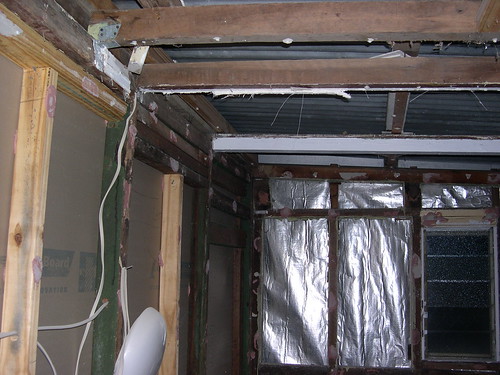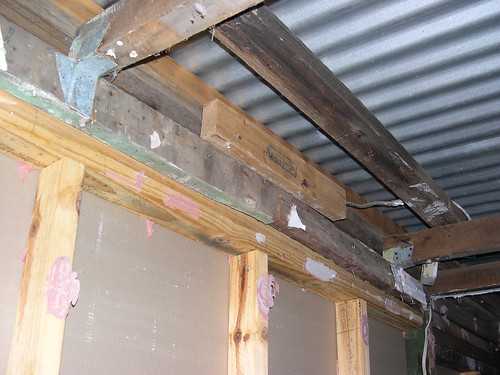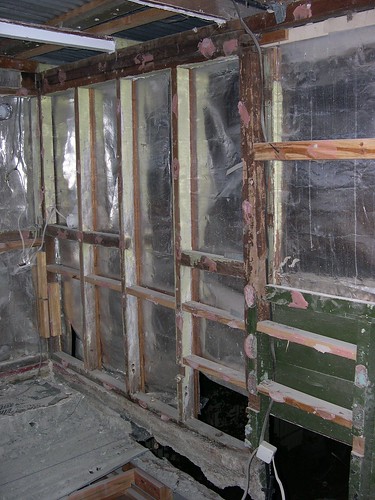To be honest I am so emotionally tired right now that I don’t really feel like writing anything, but I am hoping that this will help me to process a bit…
On Friday last week, if you recall, we found out that we need to replace the floor in our bathroom. This means gutting the entire bathroom and starting from scratch with a new bathroom floor, walls and ceiling.
I got a phone call this morning from our builder asking when I would be home, and suggesting that I bring a camera with me when I come to take a photo of something.
So I get there and he shows me how after removing the wall sheeting he can lift up the roof just by pushing on it ! Here is a series of photos of the wall frames, the roof trusses and the ceiling frame, I’ll explain more about the problems after you see the photos.
The top two photos show the wall between the dining room and the bathroom. Although it is an internal wall, it is a load bearing wall. Being a load bearing wall it should be made of structural grade timber (it’s not), it should have a large, high strength continuous beam running the entire width of it (it doesn’t) and it should be tied down to the roof trusses (again it isn’t).
The third photo shows the external wall, which is also a structural / load bearing wall. This is where our builder was able to lift the roof just by pushing up on it. The external wall at least has the continuous beam running the full lenth, and some of it is structural timber, but a lot of the wall framing has been cut in half to put in the louvers and the concrete floor, and again the roof trusses are not tied down to the top beam on the wall , and some of the trusses have been installed upside down.
With the roof itself there is also not enough support for the tin that is there . There is supposed to be either 60 or 90 cm between the timber under the tin (I can’t remember which at the moment), but on our roof there is nearly a metre and a half gap in some places!
Our builder reckons that most of these problems continue into the office area of our house as well. So he will be pulling down the ceiling in the office, which is sagging in a lot of places, and having a look at it.
I won’t know until tomorrow what this all means, but what I do know for sure is that the renovation costs are now due to blow out even more. We have already needed to change our expectations to where we won’t be moving in under the house anytime soon, so I don’t know what all these additional problems with our roof and load bearing walls is going to mean…



Pingback: New Load Bearing External Bathroom Wall | Renovate Australia
Good lord, it is an irresponsible building company that completed that project. Hire a good company, a load bearing wall deficiency that you should overlook. The safety of the homes occupants could be put at risk.
<a href=”http://www.schulteroofing.com/bryan-roofing/”>Bryan roofer Schulte Roofing</a>
Dealing with
such things is not easy, so why not avoid them in the first place by hiring
competent roof building companies. You can check their previous work
performance by looking at their history and the feedback they got.